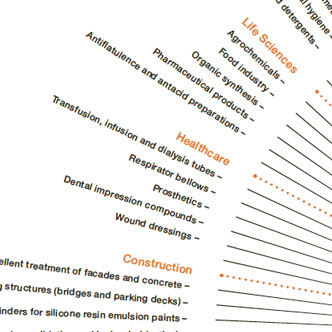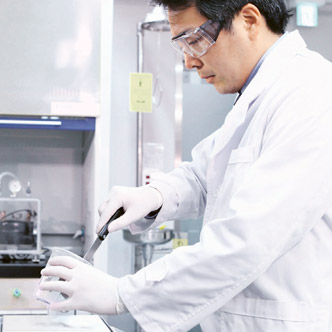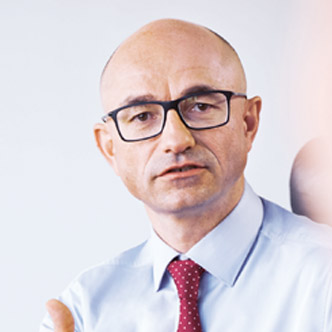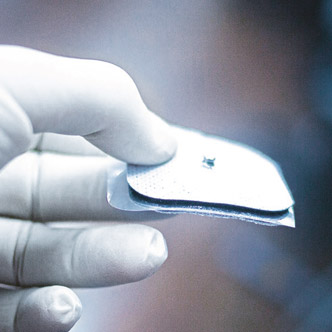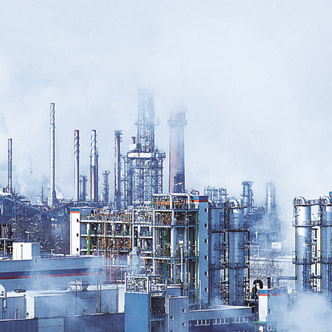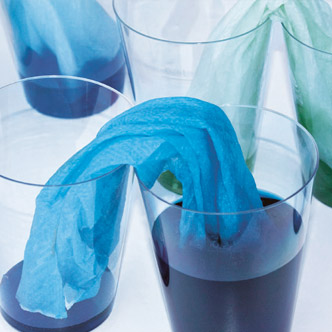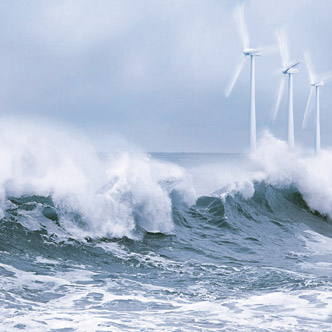The WACKER Group’s Prospects
Our expectations are based on the assumption that the global economy will grow in 2017. The strongest impetus will come from Asia and the USA, while Europe will see subdued growth.
Our capital expenditures in 2017 will focus on plants for manufacturing intermediates and downstream products. WACKER’s priority is to grow its business organically. In our opinion, the applications and markets that we are addressing will continue to offer good growth potential. Capital expenditures in 2017 will remain well below the level of depreciation. They will also come in below depreciation in 2018.
WACKER SILICONES is constructing a new pyrogenic-silica plant at our Charleston site in the USA, and a multifunctional facility for silicones at Jandira, Brazil. WACKER POLYMERS is investing in a reactor for VAE dispersions at Burghausen, Germany. In Spain, WACKER BIOSOLUTIONS has acquired a large-scale fermentation plant for producing fermentation-generated cysteine. At Siltronic, investments are focused on fulfilling the latest design-rule specifications in 300 mm technology.
Future Products and Services
WACKER POLYMERS will continue to intensify its activities in polymeric binders for sophisticated coating and construction applications. In particular, global demand is rising for functional additives that are used in water-repellent construction materials and impregnating agents. We have developed specialty dispersions for hydrophobic coatings that provide kitchens, bathrooms and foundations with reliable protection against moisture. Researchers at MarketsandMarkets estimate that the global market for waterproofing admixtures for construction applications will grow by some 8 percent on average to reach around US$ 3.8 billion by 2020.
Global demand is also increasing for environmentally compatible, water-based paints and coatings. According to Mordor Intelligence, the global coatings industry will expand by an average of 5 percent a year to reach a projected value of around US$ 179 billion by 2021. We intend to enhance our market position in this area with our specialty dispersions for functional exterior applications.
WACKER SILICONES will intensify its activities in additive manufacturing with silicones, a field we entered in 2014. WACKER’s proprietary 3D printing process, which adds silicone droplets layer by layer to make printed parts, delivers great precision and design freedom. Under our ACEO® brand, we offer extensive consultation and support services in the field of 3D printing with silicones. ACEO® developers are cooperating closely with universities and research institutes so that we can reinforce our expertise and achieve our goal of becoming the market leader for this technology. Experts anticipate annual growth rates of over 30 percent for the 3D market. Other business areas that are highly promising include our precision silicone films. They pave the way for such developments as membranes and wearable sensors for textiles, which can be used, for example, to depict the wearer’s movements virtually, for medical and therapeutic purposes.
According to experts, the wound-dressing market is projected to grow by 6 percent a year through 2021. In response to this demand, WACKER has developed specialty silicone gels. For large or chronic wounds, the medical sector is increasingly turning to silicone-coated wound dressings. In cosmetics and personal care, we are developing new silicone additives. Activities in Asian markets are focusing on silicone elastomer gels for formulating skincare products and make-up. In China and India, we are expanding our portfolio of silicone fluids and emulsions for shampoos and conditioners. Asia and the Middle East are the main growth drivers for cosmetics and personal-care products. Asia has already become the world’s largest market, with the value of goods sold exceeding €100 billion.
In the construction sector, we are focusing, for example, on new anti-graffiti coatings and on adapting our products to local requirements so as to further enhance our presence in regional markets. Silane-modified hybrid polymers are becoming increasingly important as a technological platform for formulating construction sealants and adhesives, highly durable industrial adhesives, coatings, and waterproofing membranes. We also anticipate growth momentum from our silicone additives for producing wood-plastic composites. According to MarketsandMarkets, global demand for such hybrid plastics will expand by 12 percent annually through 2021. Growth will come mainly from the construction and automotive industries.
Wacker Biotech has developed a reliable, state-of-the-art process that will enable medac, a pharmaceutical-industry customer, to produce its Spectrila® biopharmaceutical in a safe, cost-efficient manner to supply the market. The medication is used for treating acute lymphocytic leukemia (ALL), the most common form of leukemia in children. In combination with other drugs, Spectrila® can achieve a cure rate of 90 percent in children. Studies by Research and Markets indicate that the biologics market will grow by an average of 7 percent a year to reach about US$ 250 billion by 2020.
The market for functional foods and dietary supplements also offers opportunities. Market research institute Mordor Intelligence projects that growth rates for foods with health benefits will average 7.5 percent a year. WACKER BIOSOLUTIONS intends to benefit from this growth, for example with its nature-identical hydroxytyrosol for cardiovascular health, its fermentation-generated cysteine for vegetarian-grade meat flavors and its cyclodextrins for egg-free baked goods.
Research & Development
The Group’s research and development work remains focused on key strategic projects. WACKER intends to spend 11 percent of its R&D budget on these projects in 2017 (2016: 15 percent). Our R&D work will prioritize the highly promising fields of energy, consumer care, biotechnology, construction applications and semiconductors, with particular emphasis on energy storage and renewable energy generation.
Production
Over the next two years, WACKER will bring additional production capacity on stream. The groupwide Wacker Operating System (WOS) program is focused on enhancing the productivity of manufacturing facilities and of every production-related service department. The emphasis is on key projects that have a high economic benefit and a strong impact on costs.
Facility Start-Ups in 2017
|
||
Location |
Projects |
Year |
|
|
|
|
|
|
Burghausen |
Dispersions reactor |
2017 |
Burghausen |
Logistics expansion for vinyl acetate monomer (VAM) |
2017 |
Adrian, Michigan, USA |
Discontinuous emulsion plant |
2017 |
Brazil |
Multifunctional facility for silicones |
2017 |
In 2017, maintenance costs will amount to about €475 million.
Procurement and Logistics
Energy and raw-material procurement remains a significant factor influencing WACKER’s profitability. Our energy and raw-material costs account for over one-third of the cost of goods sold. WACKER anticipates that the average prices of our key raw materials will be higher in 2017 than last year. In the first half of 2016, prices on the energy spot markets and other raw-material markets bottomed out. Since then, prices have been rising in these markets, which in turn has significantly affected the prices of many of our raw materials. During the remainder of 2017, crude-oil price trends could also influence the pricing of key WACKER raw materials, such as ethylene and methanol. Due to Europe’s high dependence on imported raw materials, anti-dumping tariffs may also have a negative impact on WACKER’s raw-material costs.
We assume that electricity prices will remain stable year over year, while prices for natural gas will be higher. Overall energy costs will be higher in 2017 than last year.
Our raw-material and energy supplies are largely secured for 2017. The markets in which we source our raw materials are sufficiently liquid, making bottlenecks unlikely. At Technical Procurement & Logistics, we are establishing a globally standardized supplier-management methodology. The aim here is to focus on the key partners in our supplier portfolio so that we can work together with them to increase their performance capabilities for WACKER.
On the logistics side, we are exploring the potential for digitalizing the logistics chain, running pilot applications at our central warehouses and cooperating closely with our logistics partners.
Sales and Marketing
WACKER POLYMERS will open a new technical competence center in Indonesia in 2017. An additional sales office will be opened in Hanoi, Vietnam, while our sales office in the Philippines will be enlarged. In the Middle East, we are systematically expanding our sales activities in cooperation with our distributors. The most important tradeshow in 2017 is the European Coatings Show, which takes place in Nuremberg this April.
Employees
We expect employee numbers to edge up in 2017. Prudent personnel planning will remain a priority.
Sustainability
We will continue improving WACKER’s energy efficiency. By setting quantifiable environmental targets, we intend to lower the environmental impact of our production activities.
The regional focus of WACKER’s sustainability management activities will be on Asia in 2017, where we will examine environmental, health and safety aspects at individual sites. In 2018, the regional focus will be on the Americas.
As regards occupational safety, our groupwide target is to lower WACKER’s accident rate (the number of workplace accidents per million hours worked) to 1.7 or lower by 2020.
We are preparing another 110 substance dossiers for the third stage of REACH, which runs until mid-2018.
In 2017, WACKER will publish its Sustainability Report for 2015 – 2016.
WACKER’s Environmental Targets through 2022
| Download XLS |
|
||||||
Region |
Key Environmental Indicator |
Base Year |
Targets for 2022 (%) |
|||
|
|
|
|
|||
WACKER Germany |
Weighted specific energy consumption (amount of energy per unit of net production output) |
2007 |
-50 |
|||
WACKER Germany |
Specific carbon dioxide emissions (per metric ton of net production) |
2012 |
-15 |
|||
Group |
Specific dust emissions (per metric ton of product) |
2012 |
-50 |
|||
Group |
Specific emissions of relevant VOCs (volatile organic compounds; per metric ton of product) |
2012 |
-25 |
|||
